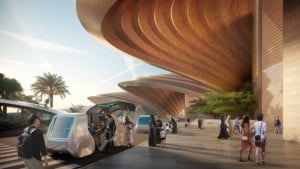Paulton’s Park near Ower in the UK recently experienced this first-hand when it was discovered that two of the park’s most popular rides may be operating without planning permission.
During the summer, it was reported in the local media (an Aug 10 story in the Daily Echo) that the Cobra and Edge rides at Paulton’s Park may be operating without planning permission. The Cobra is a Gerstlauer steel coaster that debuted in 2006 and Edge is a Zamperla Disk-O coaster that debuted this year. The New Forest National Park Authority (NPA) asked Paulton’s to apply for a Lawful Development Certificate to "regularise" the planning situation.
Paulton’s agreed to apply for permission for Cobra and Edge. Moreover, Paulton’s sought to change the real property designation of the site of these two ride from “country park” to “amusement park.” Its seeking a change of property designation probably necessitates that the NPA must give stricter scrutiny of the planning criteria for that parcel. Not only does the designation change mean that the NPA would more closely examine the application, it also suggests that Paulton’s may have been aware that the property may not be covered under permitted development rights. Unfortunately for Paulton’s, by seeking some form of retroactive permission for the rides, the opposition is well-armed with operational and traffic data from the 2006, 2007, 2008 and one-half of 2009 operating seasons making it easier for them to present their resistance to the request.
It’s not like this incident was Paulton’s first experience with property planning. Hampshire County Council documents show that back in 1990, the County Planning Officer and County Surveyor recommended to the New Forest District Council to object to proposed development at Paulton’s on the grounds that the development was contrary to Policy E1 of the South Hampshire Structure Plan: First Alteration, which seeks generally to restrict development in the countryside. Concerns were raised about environmental impact and accommodating the likely increase in traffic.
This previous opposition to development on the site should have placed Paulton’s on notice about the difficulty of getting approval for development on its property. Paulton’s should have been more pro-active with the NPA to ascertain what was included under permitted development rights and what would necessitate applying for extended rights on the property in question.
At first blush, it appeared that Paulton’s had dodged a big problem. A followup news report in the Oct 14 Daily Echo indicated that it was expected the NPA would probably approve Paulton’s belated application and allow the two rides to remain, although there were protests from the community. However, the Romsey Advertiser reported on Oct 23 that the NPA, in a 7 to 5 vote, refused Paulton’s application, counter to a planning officer’s recommendation.
While we don’t yet know the ultimate outcome of this situation and whether or not the rides will be required to be dismantled, we do know that in the short term, an enforcement notice will be served on Paulton’s before Christmas, but the rides would be open during the upcoming half-term holiday. To insure that they get the maximum benefit from the rides, it appears likely that Paulton’s would appeal the NPA’s decision and continue to operate the rides until an appeals decision is made and an enforcement action then commenced, if Paulton’s expected appeal proves to be unsuccessful.
What can we learn from Paulton’s predicament? Don’t assume that your new ride, attraction or building will meet all the permitting requirements. Get to know the local and regional planning directors that have authority over your property. They can steer you through several of the landmines and potholes you’ll encounter in getting the proper approval for your improvement. But don’t stop at the planning directors. Relationships with your local town, village or city council members are important as well. You need to educate them so they know and understand your business and what you’re trying to accomplish with the property improvement. On occasion, invite these individuals to meet with you so you can provide them with a proposed 3-5 year property outlook at your business for planning purposes. It need not be specific but for any major improvements to your park, you should give them a ballpark idea of the length, width and height dimensions that you will need. By educating your zoning and planning decision-makers, they can keep your needs in mind when determining broad-based zoning issues and both sides will understand the reason and needs for your new park or attraction improvement.
Amusement Parks: Between a Rock and a Hard Rock...








